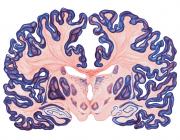Defining the units of competition: influences of perceptual organization on competitive interactions in human visual cortex.
Publication Year
2010
Type
Journal Article
Abstract
Multiple stimuli that are present simultaneously in the visual field compete for neural representation. At the same time, however, multiple stimuli in cluttered scenes also undergo perceptual organization according to certain rules originally defined by the Gestalt psychologists such as similarity or proximity, thereby segmenting scenes into candidate objects. How can these two seemingly orthogonal neural processes that occur early in the visual processing stream be reconciled? One possibility is that competition occurs among perceptual groups rather than at the level of elements within a group. We probed this idea using fMRI by assessing competitive interactions across visual cortex in displays containing varying degrees of perceptual organization or perceptual grouping (Grp). In strong Grp displays, elements were arranged such that either an illusory figure or a group of collinear elements were present, whereas in weak Grp displays the same elements were arranged randomly. Competitive interactions among stimuli were overcome throughout early visual cortex and V4, when elements were grouped regardless of Grp type. Our findings suggest that context-dependent grouping mechanisms and competitive interactions are linked to provide a bottom-up bias toward candidate objects in cluttered scenes.
Keywords
Journal
J Cogn Neurosci
Volume
22
Pages
2417-26
Date Published
11/2010
ISSN Number
1530-8898
Alternate Journal
J Cogn Neurosci
PMID
19925189

